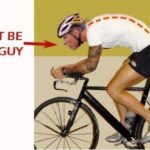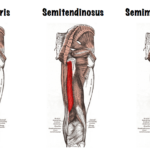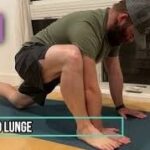Proprioceptive Neuromuscular Facilitation (PNF) stretches are a method of rapidly expanding range of motion. While originally designed for rehabilitation, they are now used by athletes and weekend warriors as well as studies show PNF stretches are one of the most effective stretching techniques if done twice a week [4].
Below is an overview of PNF and a demonstration on how to apply for increasing range of motion in the Hamstrings and Hip Flexors.
What is PNF?
It is a technique combining passive stretching and muscle contraction to achieve maximum flexibility. It can be done with a partner or on your own with assisted tools (such as therapy bands or stretch band ropes).
There are multiple techniques of PNF stretches:
1. Hold/relax :
This technique relies on a muscle reflex called autogenic inhibition. During this process, the muscle auto-regulates after an increased contraction or stretch by reducing muscle excitability. In theory, this reflex allows the muscle to be stretched to protect itself from muscle tear [8].
- Put the muscle in a maximum stretch position (passive stretch) and hold for a few seconds.
- Contract the same muscle without moving (isometric contraction*) for 5-10 seconds.
- Relax the muscle, and increase the stretch again while exhaling. The second stretch should be deeper than the first.
- Repeat steps a., b., and c., several times until the soft tissue experiences a noticeable release.
*An isometric contraction occurs when no movement takes place/the muscle length does not change during contraction. For example, when pushing an immovable object [7].
2. Contract/relax:
This technique also relies on autogenic inhibition.
- Put the muscle in a maximum stretch position (passive stretch) and hold for a few seconds.
- Contract the same muscle while moving (isotonic contraction**).
- Relax the muscle, and increase the stretch again while exhaling. The second stretch should be deeper than the first.
- Repeat steps a., b., and c. several times until the soft tissue experiences a noticeable release.
**An isotonic contraction occurs when a movement takes place while contracting a muscle. For example, lifting a dumbbell during a Biceps curl [7].
3. Contract/hold:
This technique relies on a muscle reflex called reciprocal inhibition. During this process, the antagonist (opposing muscle) relaxes while the agonist (major muscle completing the movement) contracts [8]. For example, in doing a Biceps curl, the Biceps muscle contracts and shortens while the Triceps muscle relaxes and elongates.
- Put the muscle in a maximum stretch position (passive stretch) and hold for a few seconds.
- Contract the antagonist (opposite) muscle without moving (isometric contraction) for 5-10 seconds.
- Relax the muscle, and increase the stretch again while exhaling. The second stretch should be deeper than the first.
- Repeat steps a., b., and c. several times until the soft tissue experiences a noticeable release.
Most PNF Stretching techniques are usually assisted with a partner to achieve maximum flexibility and stability. However, there are few techniques that you can do by yourself. Below are a couple of demonstrations in stretching the Hamstrings and Hip Flexors that you can do at home. These muscles are often tight with endurance athletes as well as those who spend time driving or at a desk. You can add these stretches to your fitness routine to increase range of motion in the hips.
Hold/Relax for Hamstrings

- Lie on your back on the floor and use a strap or towel to hold one leg straight up to the sky. Extend the knee and flex the ankle the best you can.
- Use only about 25% of your strength as you push your heel towards the floor for 3-5 seconds in an isometric contraction.
- Relax for 5-10 second while pulling your foot toward you (stretching the Hamstrings).
- Repeat steps 1-3 until you stop feeling a release and lengthening throughout the backside of your legs and hips.
Contract/Hold for Hip Flexors

- Position yourself in a half-kneeling position. You can hold a pole against the back of your torso to help stabilize your spine by bracing the abdominals and pressing your lower back into the pole.
- Afterwards, push your hips as far forward as possible while bracing your core.
- Next, activate the Glutes to push your hips forward even more for 5-15 seconds while exhaling.
- Hold the increased stretch position for 5-10 seconds the repeat steps 1-3 until you stop gaining range of motion.
PNF stretching is a great technique to increase range of motion for athletes. At Phila Massages, your therapists can include PNF in your session, as well as demonstrate PNF techniques for self-care.
References (viewed 12/6/17):
- http://www.philamassages.com/blog-1/use-it-or-lose-it-how-age-affects-flexibility?rq=static%20stretching
- Appleton, Brad. 2001. Stretching and Flexibility: Everything You Never Wanted To Know. Roots & Wings. Pp. 21
- https://www.healthline.com/health/fitness-exercise/pnf-stretching#pnf-techniques
- Proprioceptive neuromuscular facilitation stretching: mechanisms and clinical implications. Melanie J. Sharman, Andrew G. Cresswell, Stephan Riek. Sports Med. 2006; 36(11): 929–939.
- https://www.prehabexercises.com/the-art-of-stretching/
- http://link.springer.com/article/10.2165/00007256-200636110-00002
- http://web.mit.edu/tkd/stretch/stretching_2.html#SEC15
- http://coolefitness.com/blog/autogenic-inhibition/
This article/video is for educational purposes only; do not attempt without your physician’s clearance. If you are in pain or injured, see your physician.
Copyright © Vidal Sports LLC 2018







